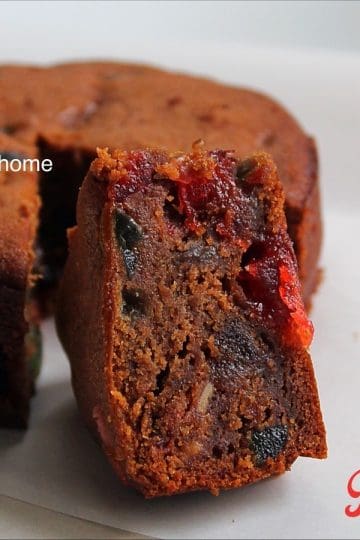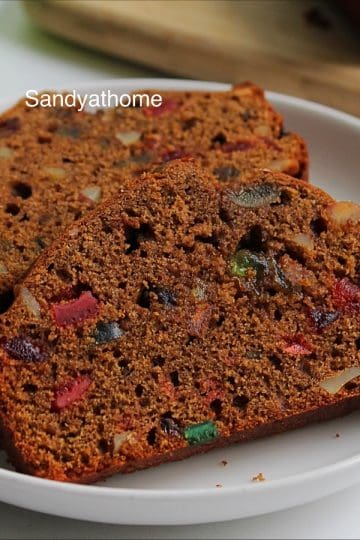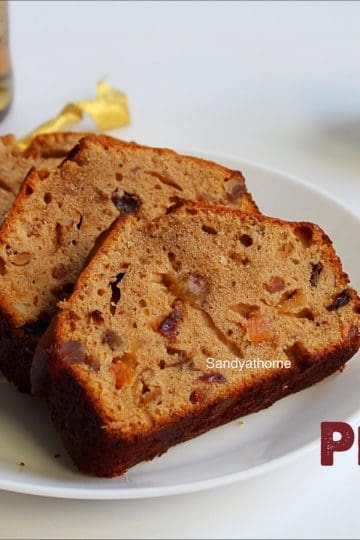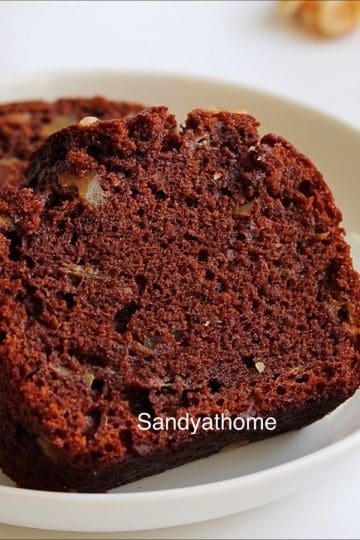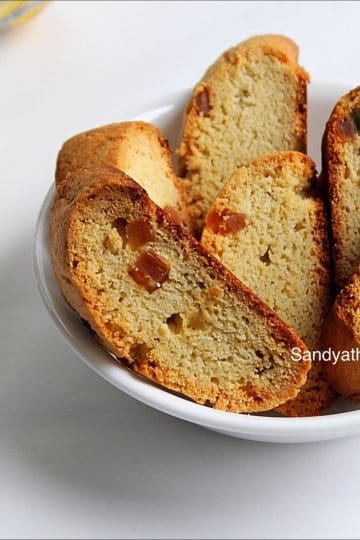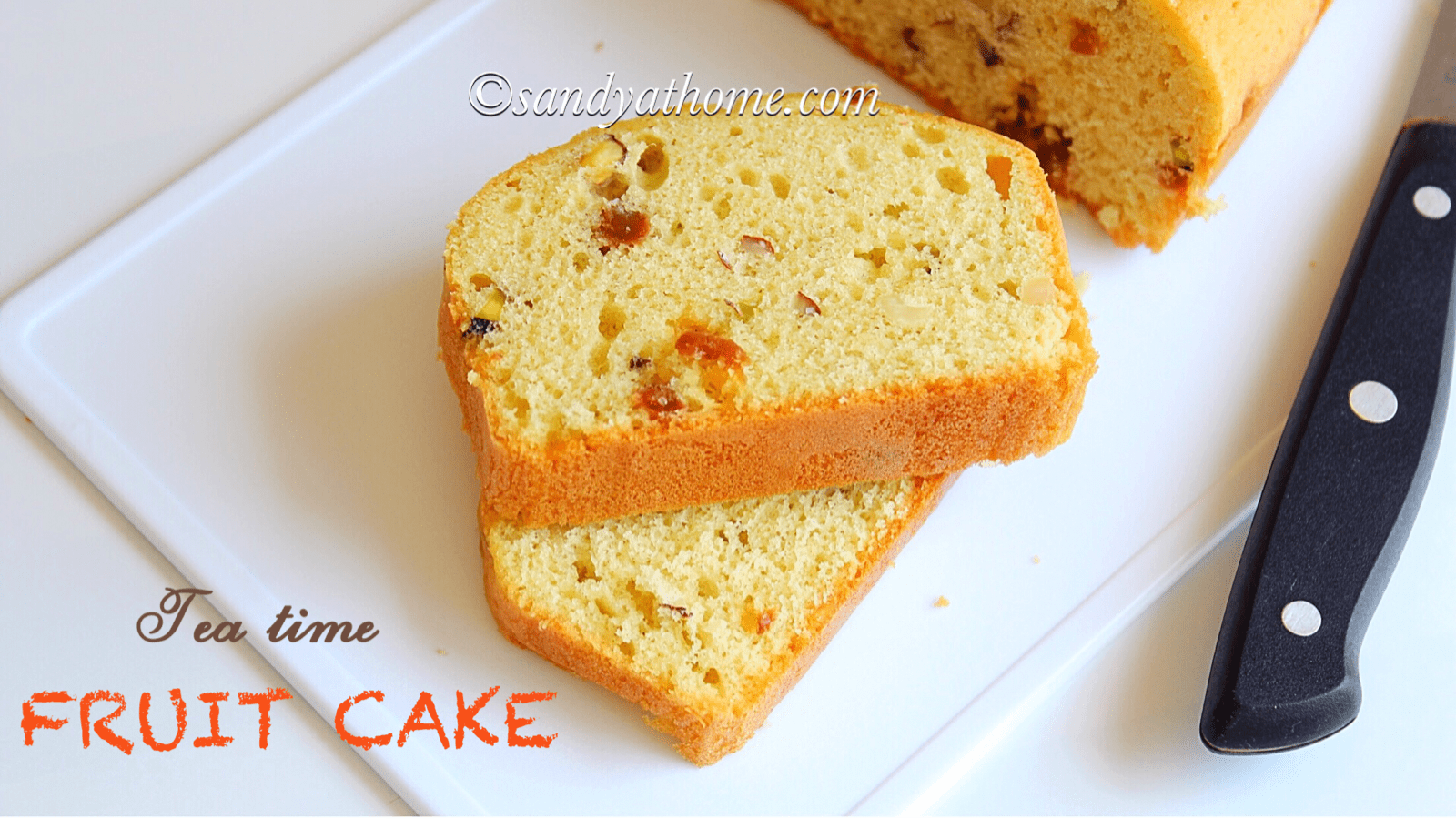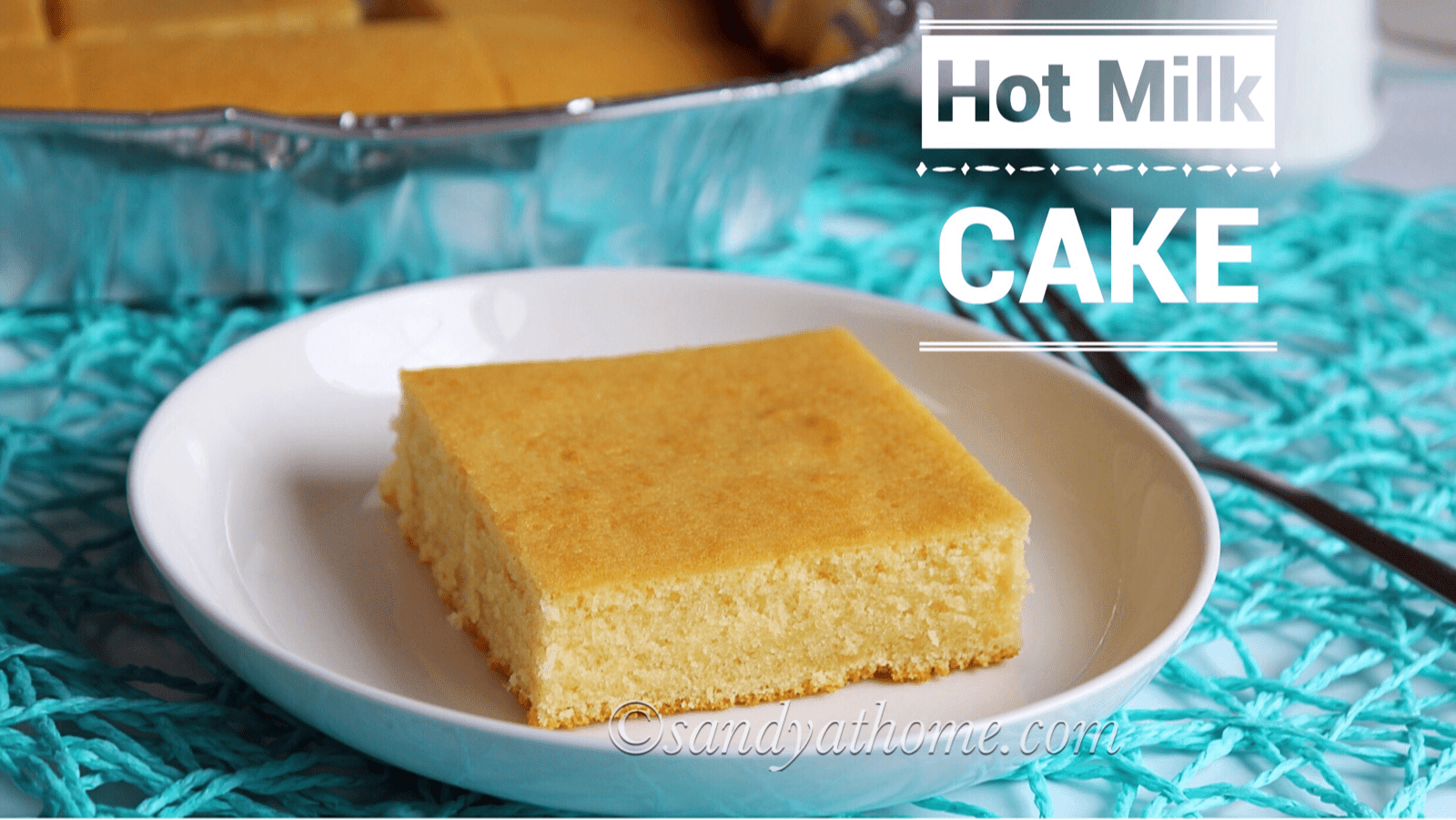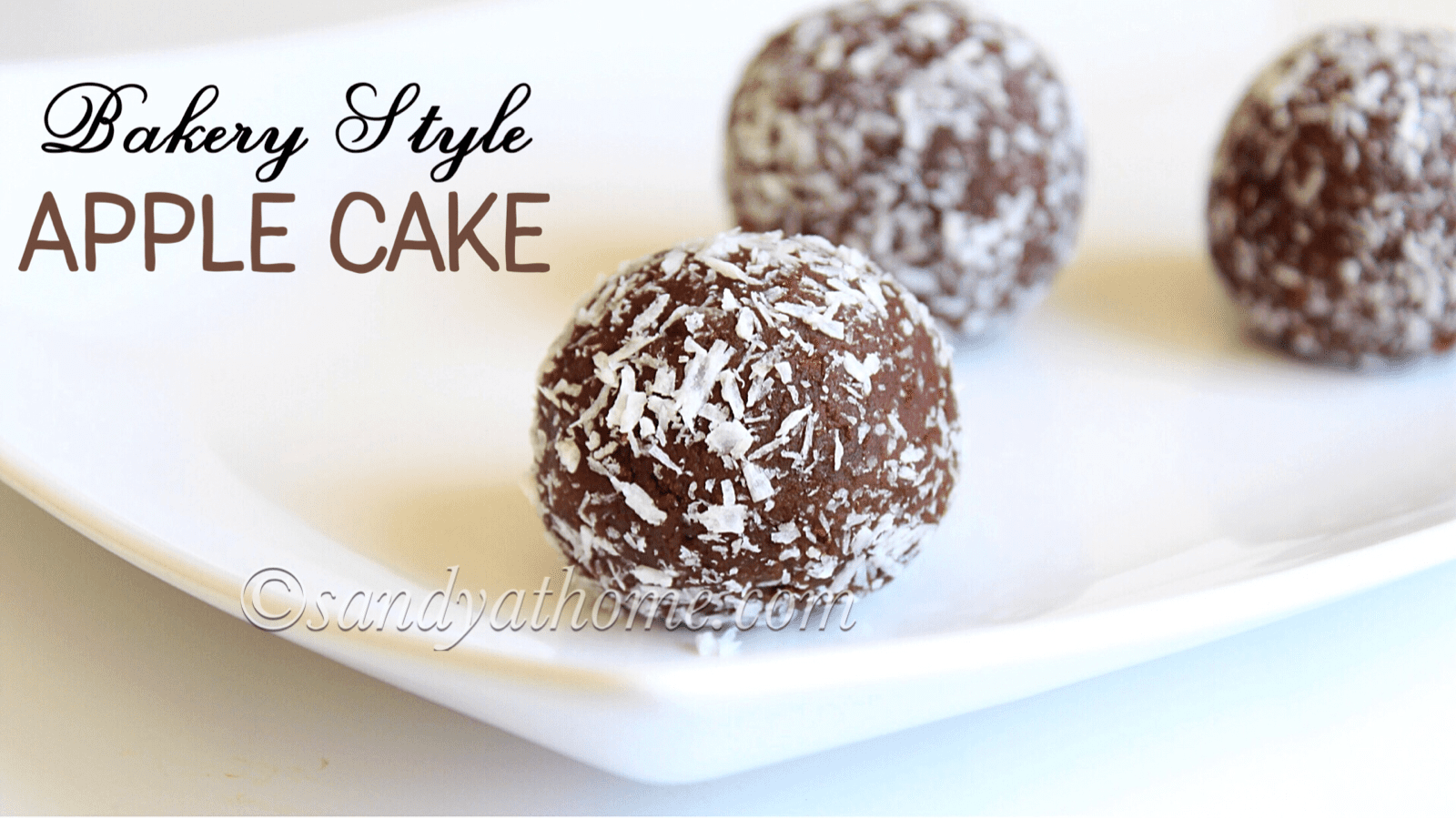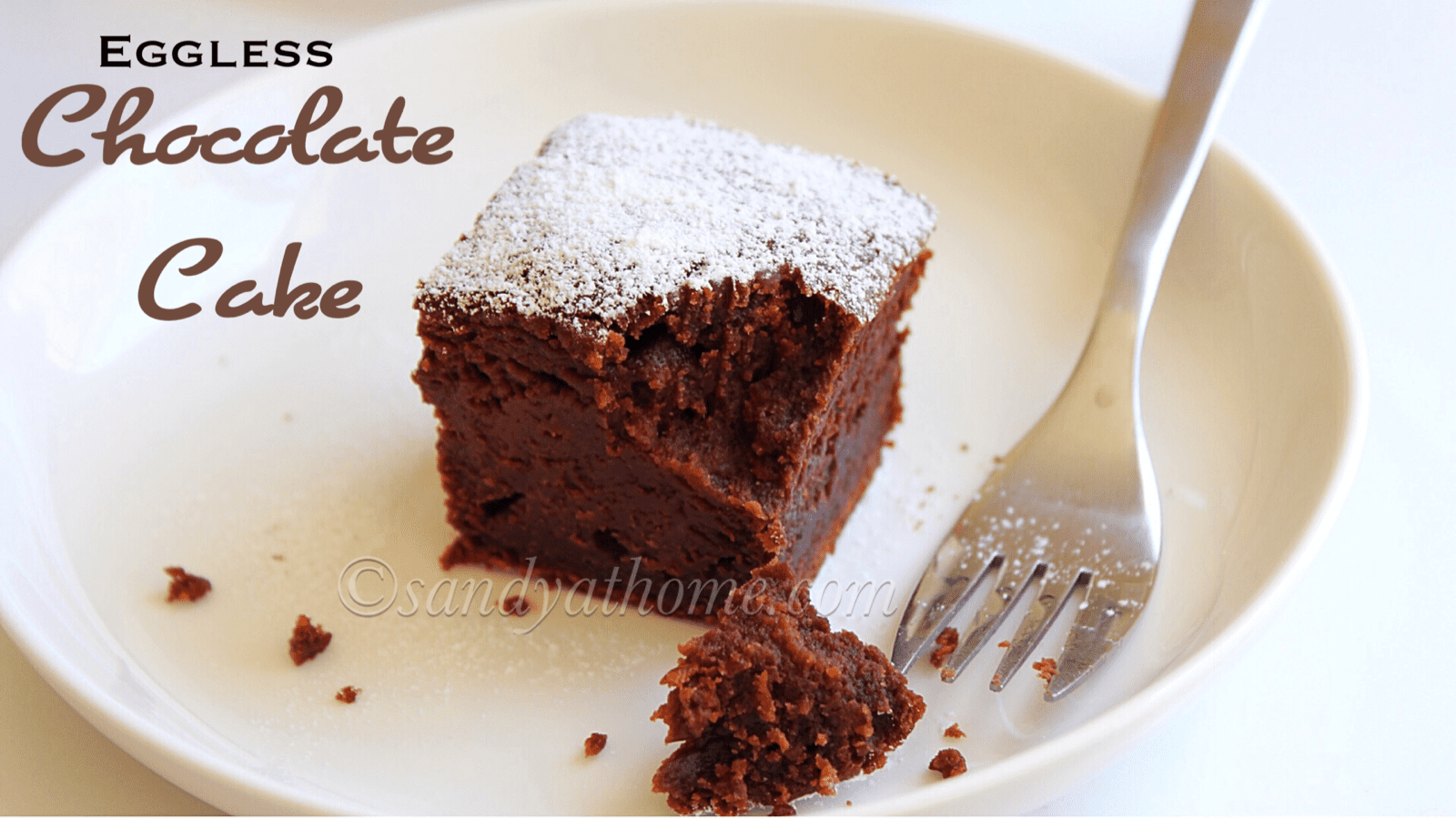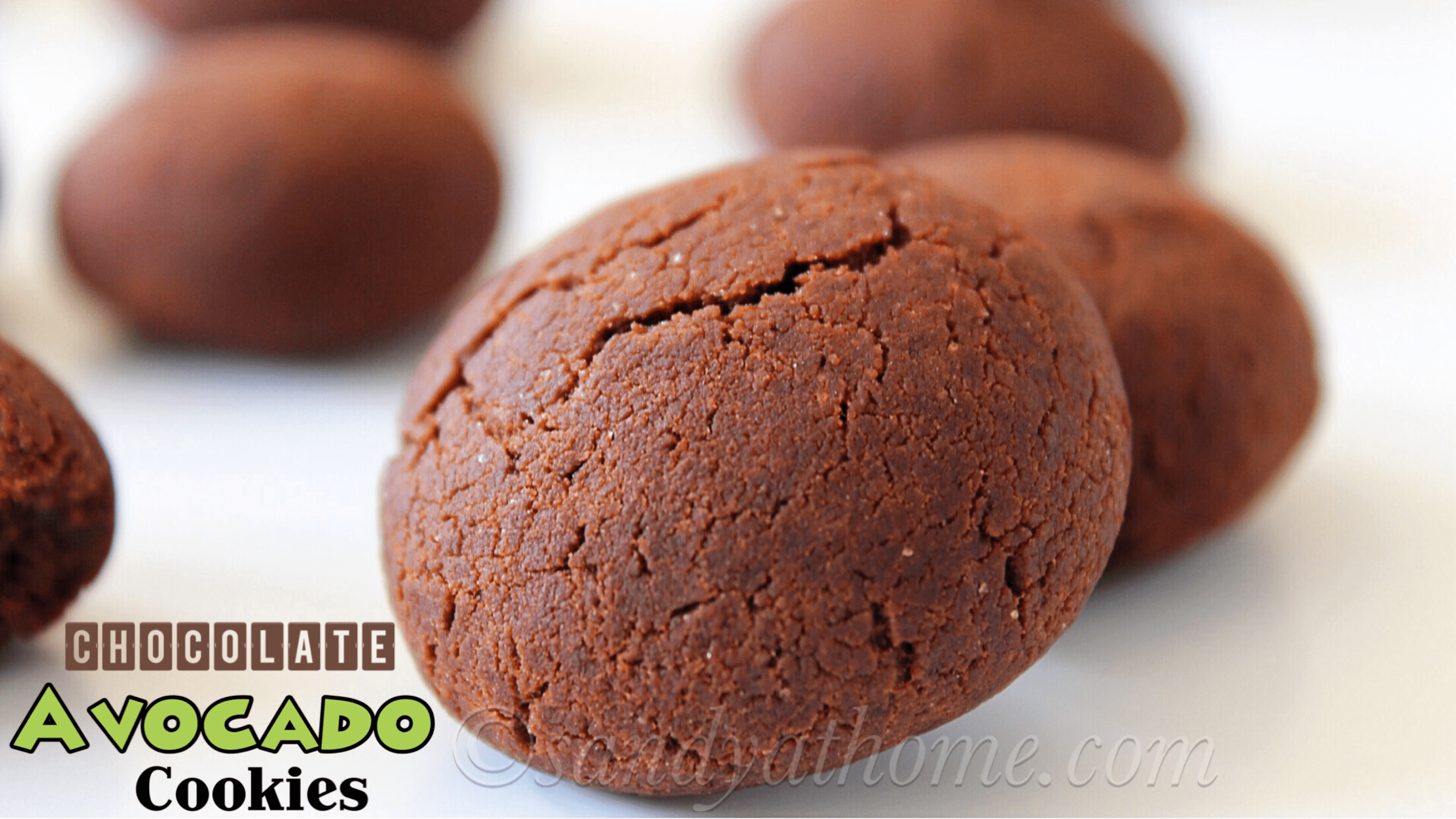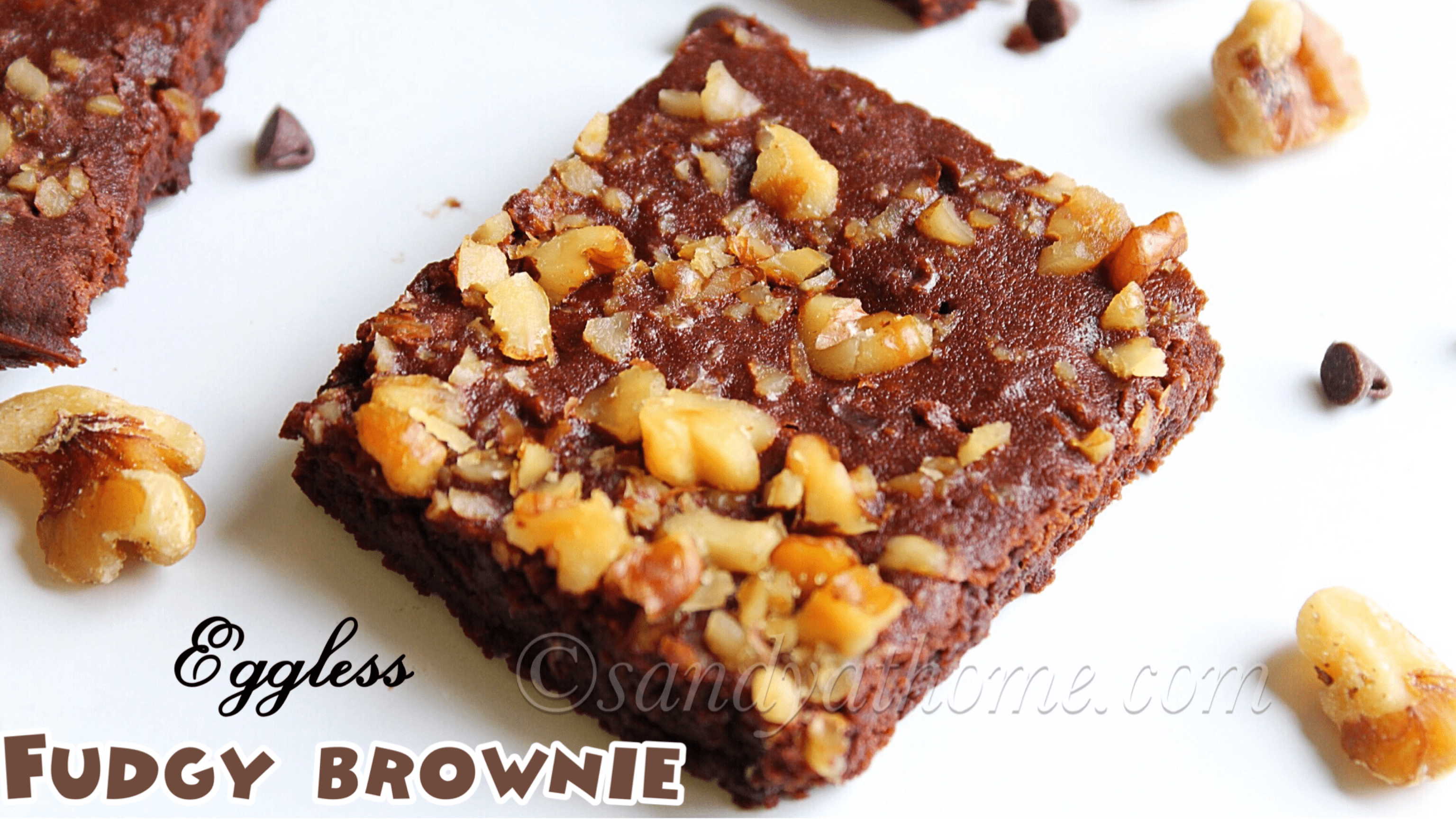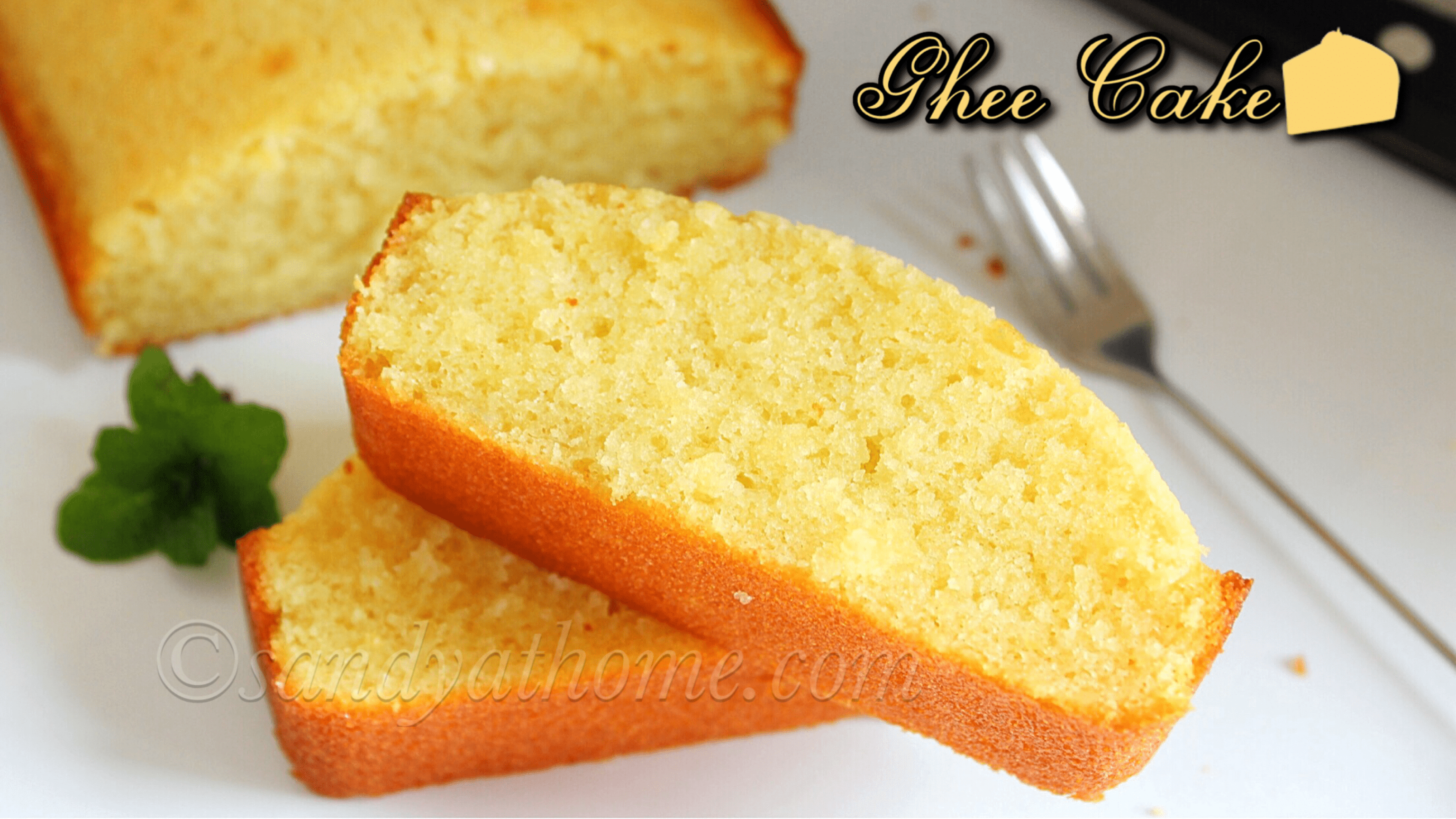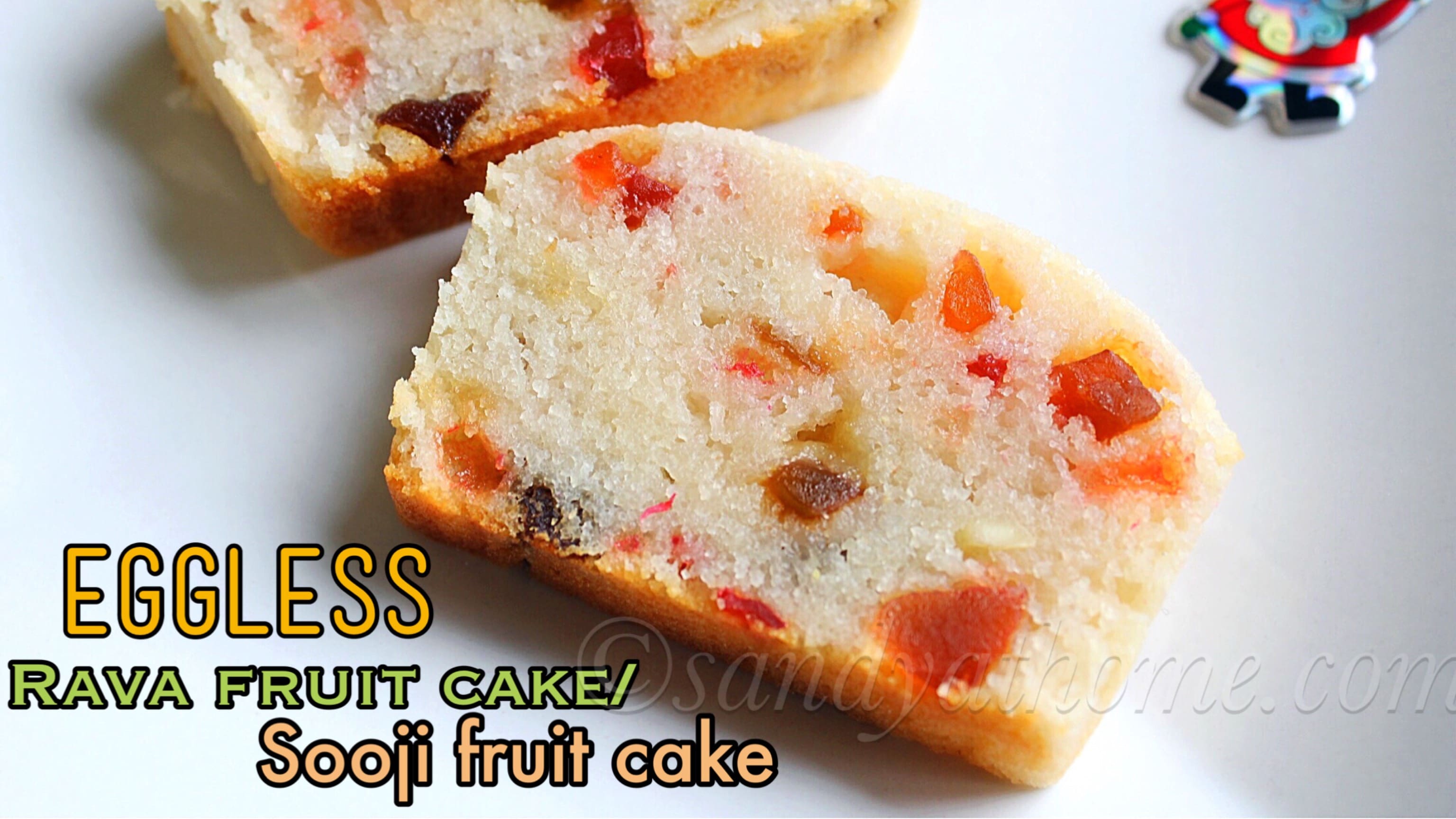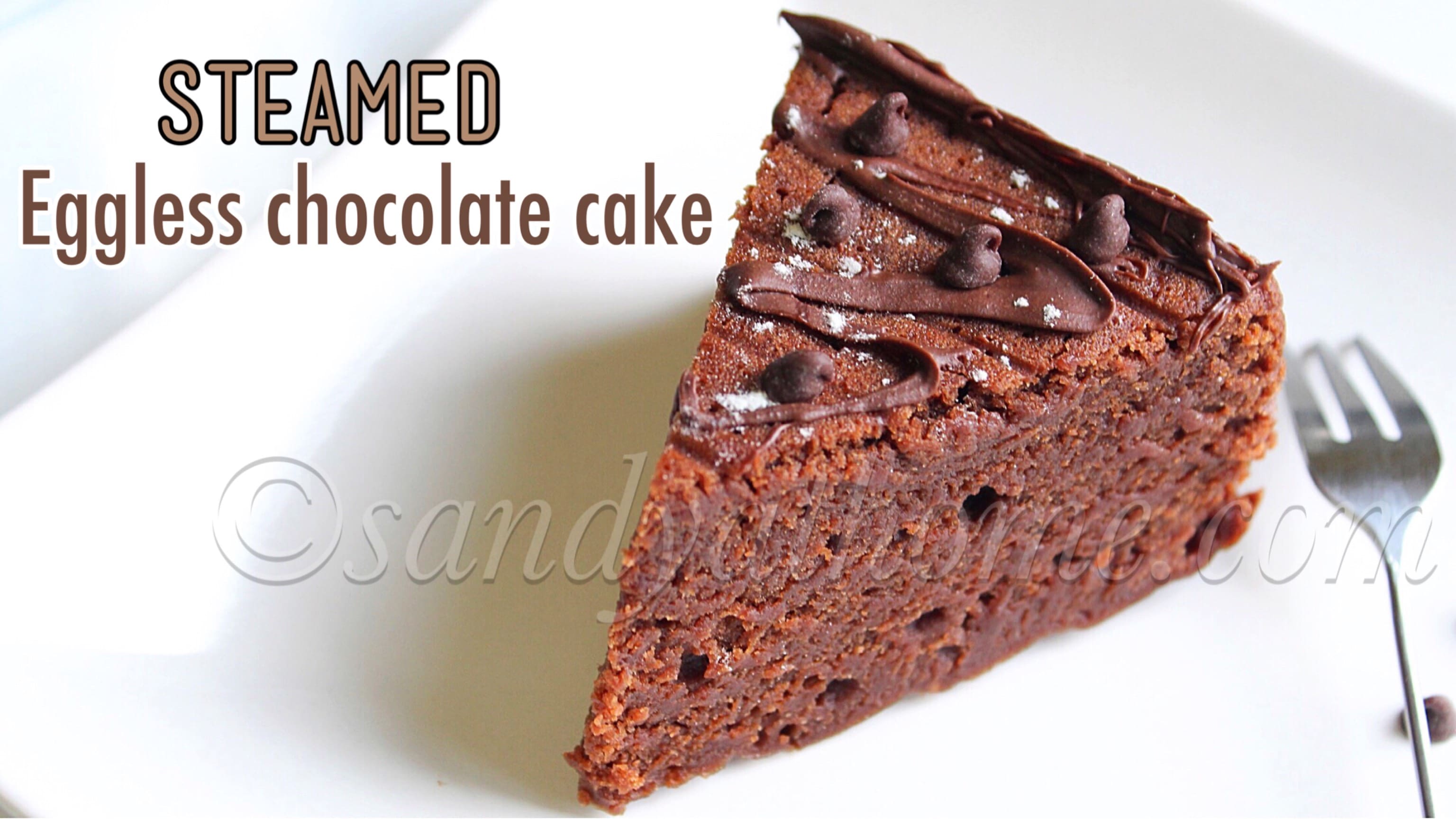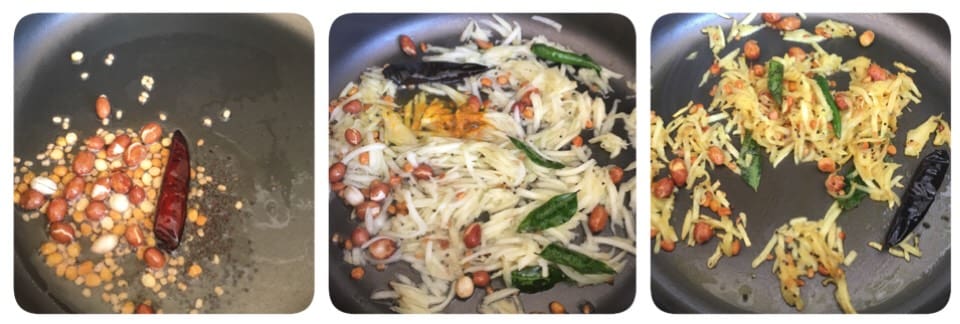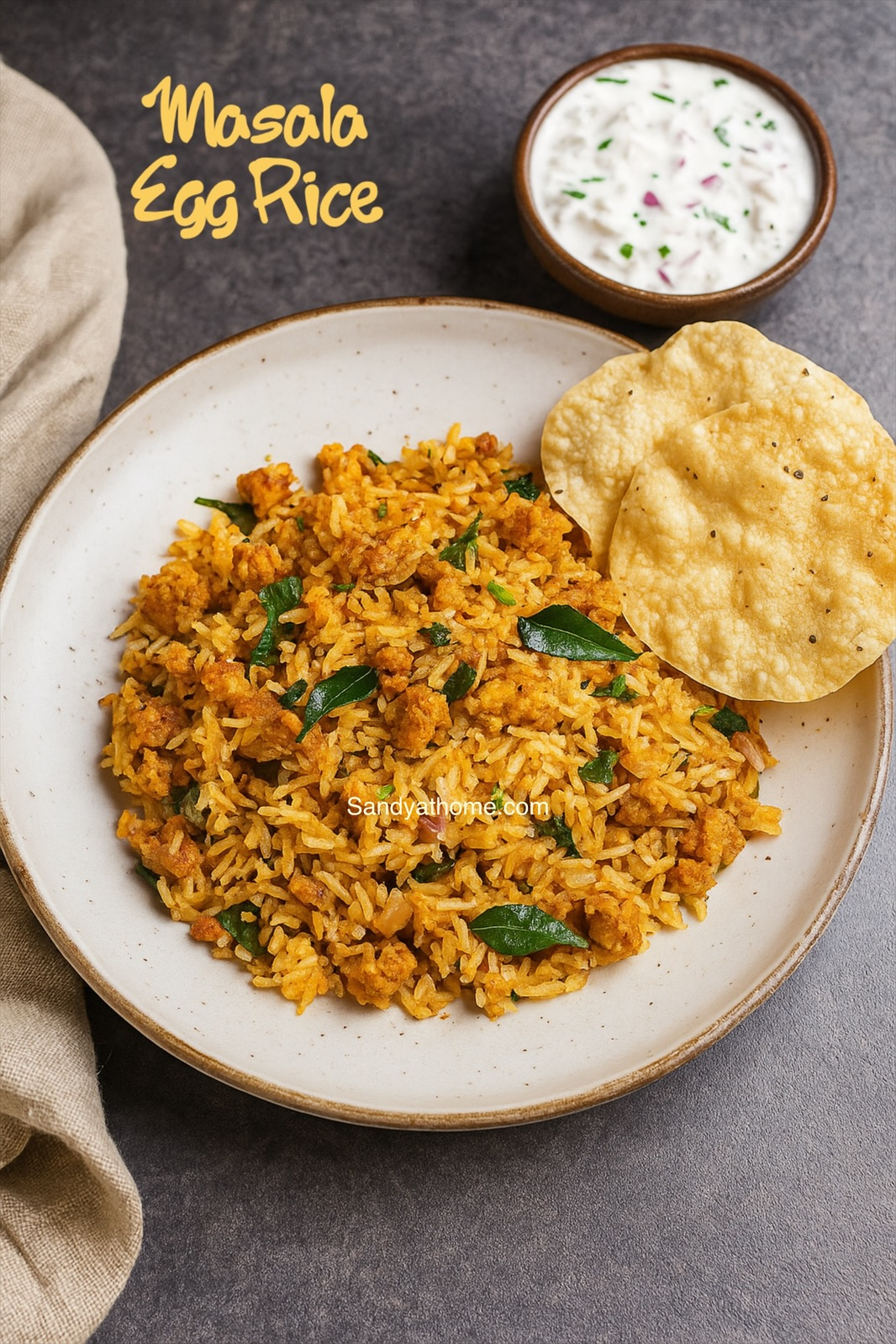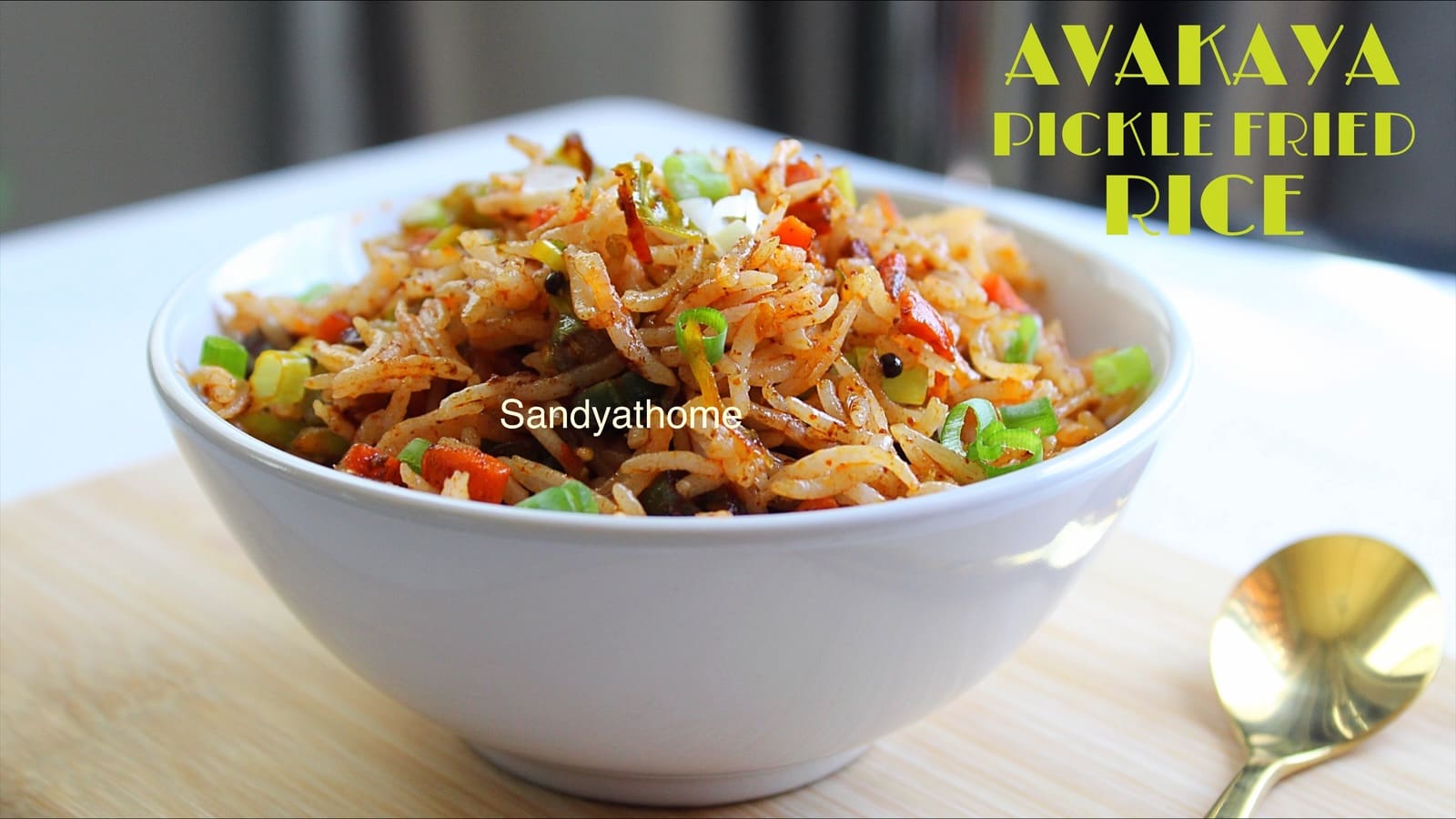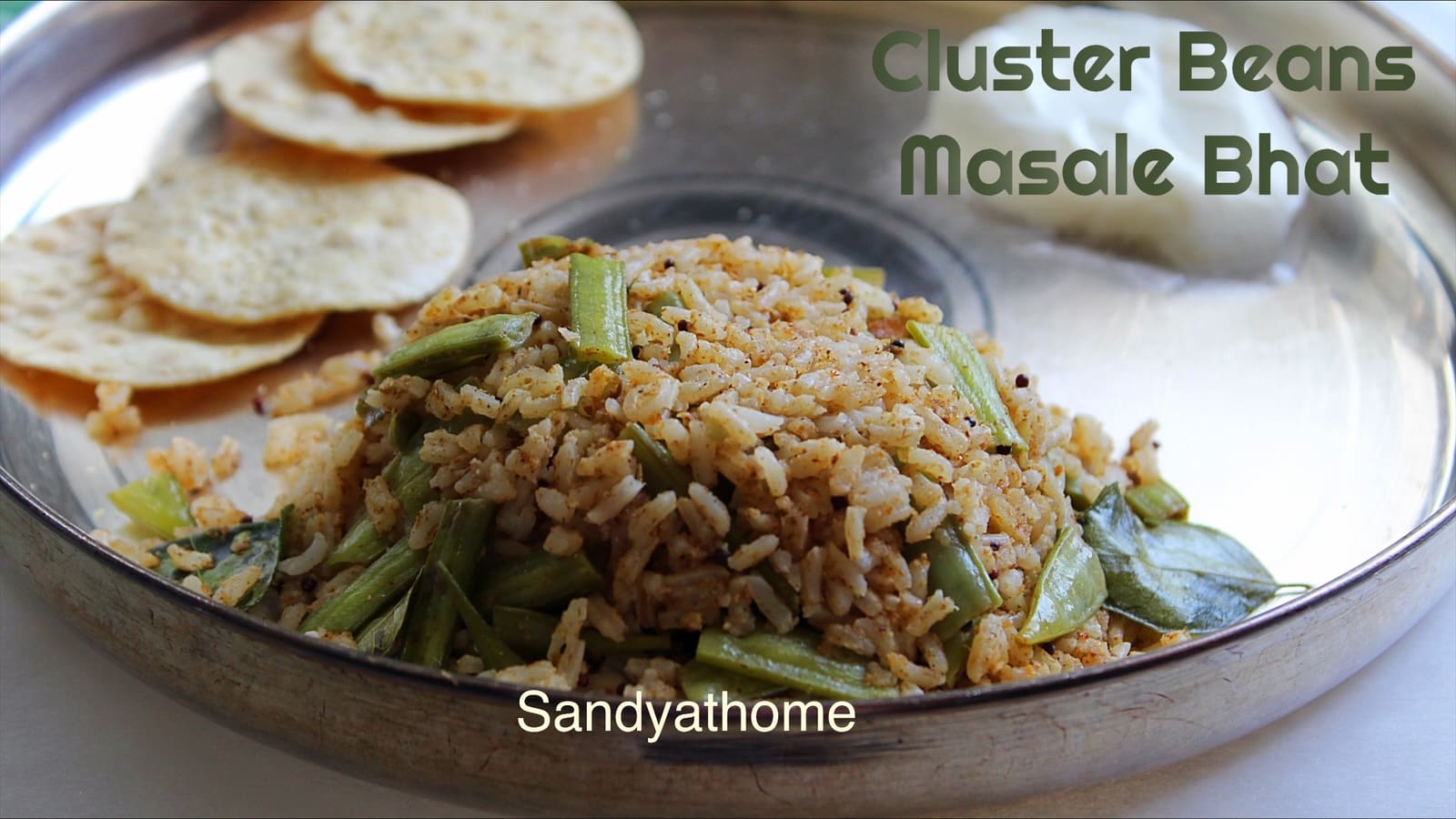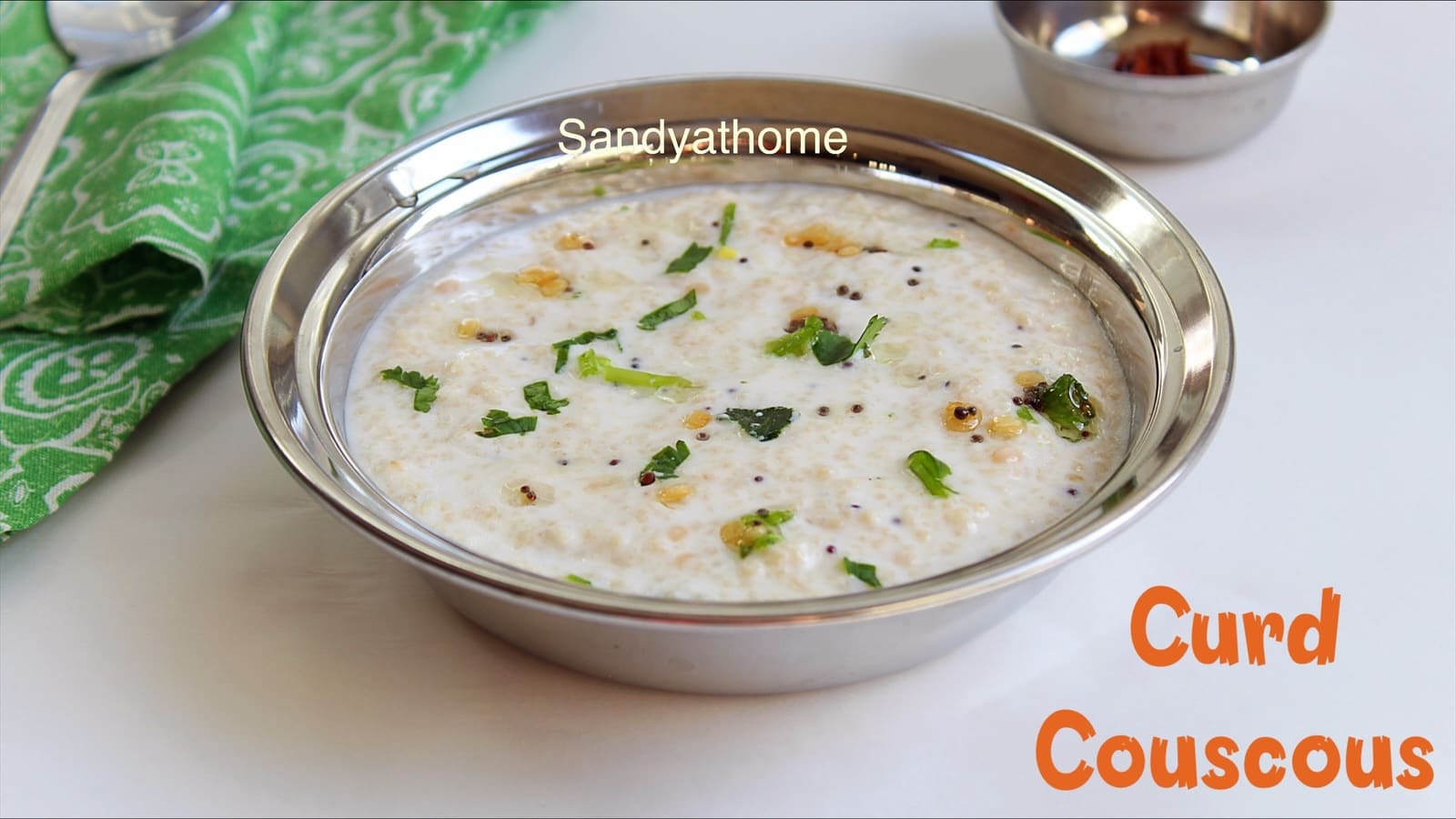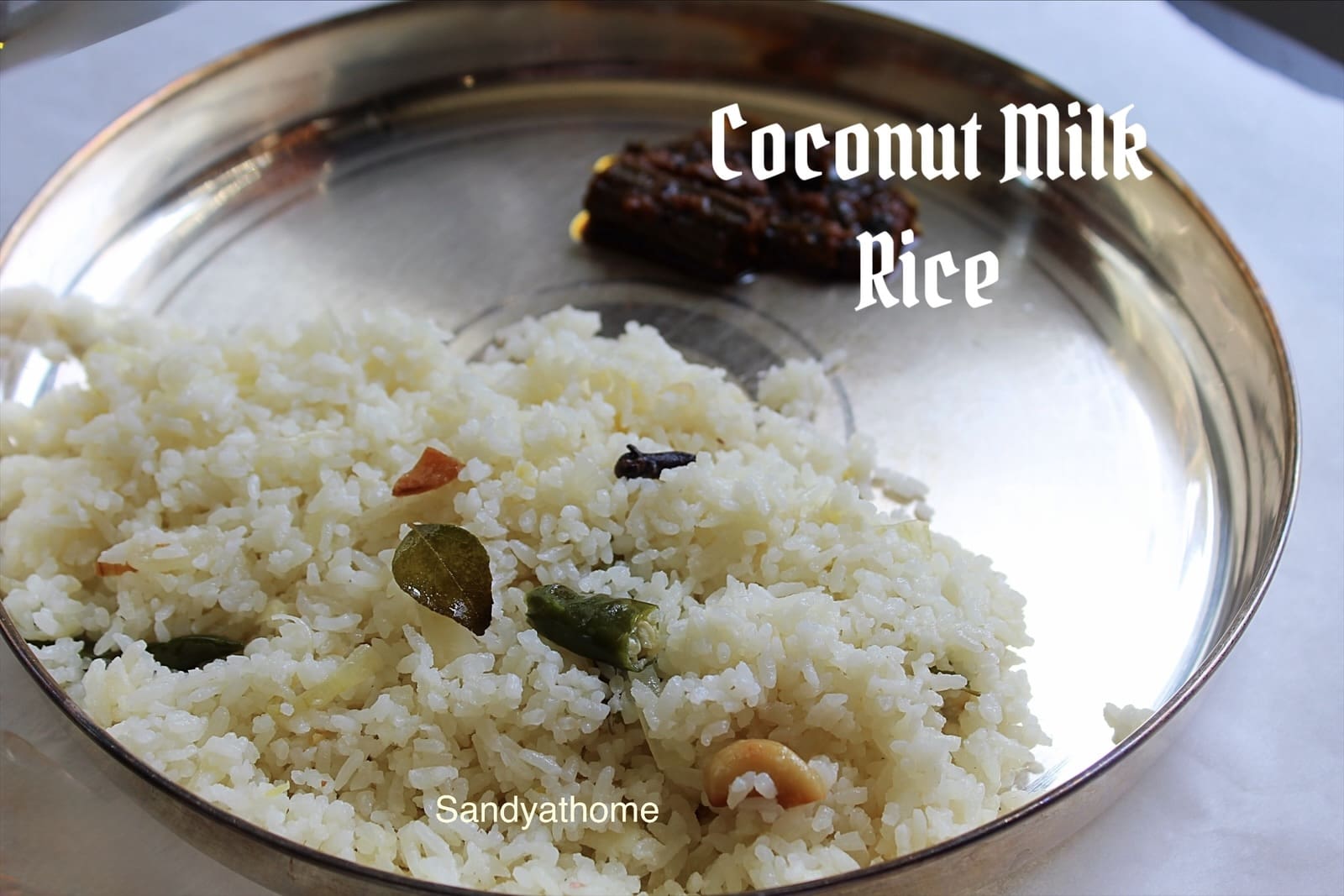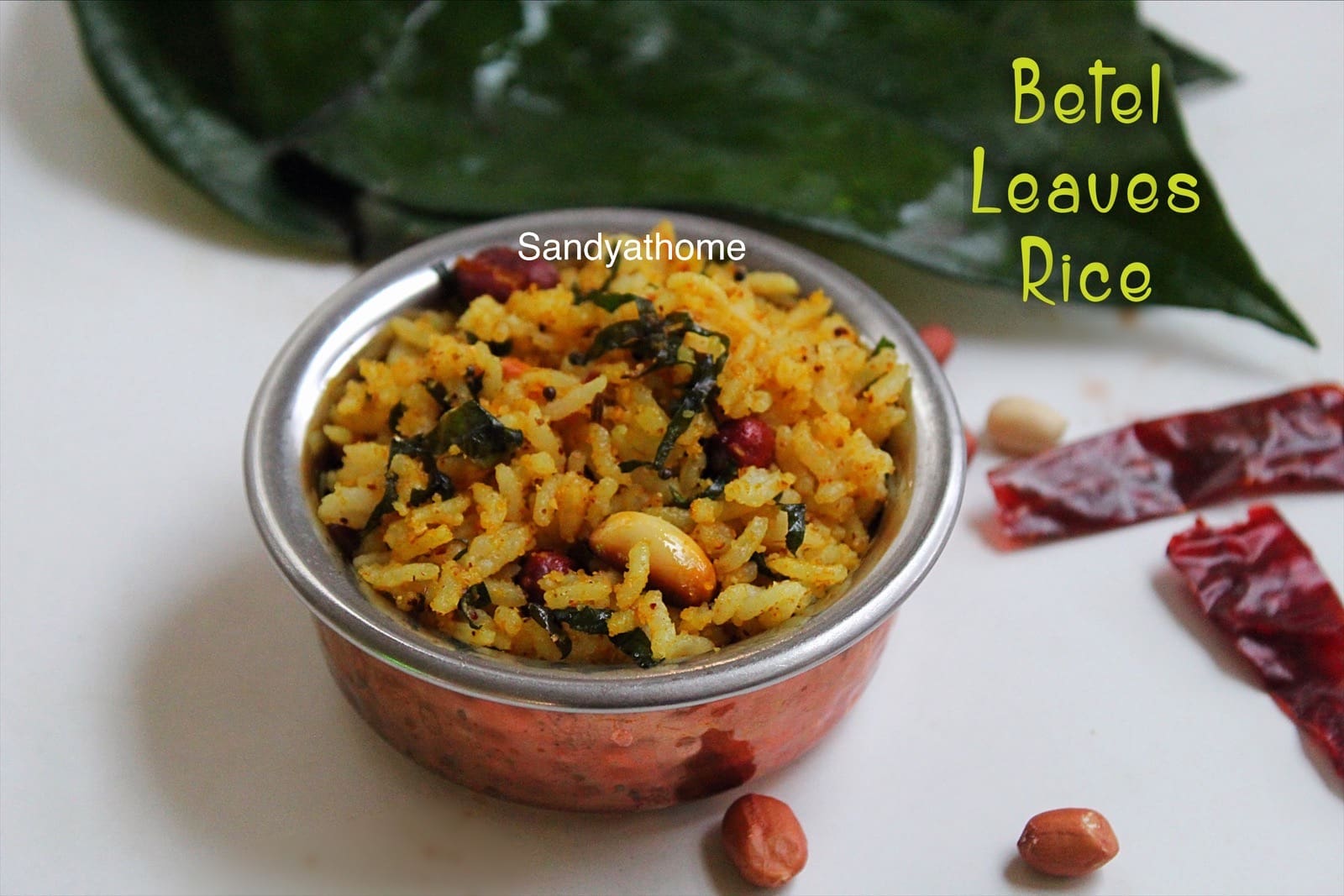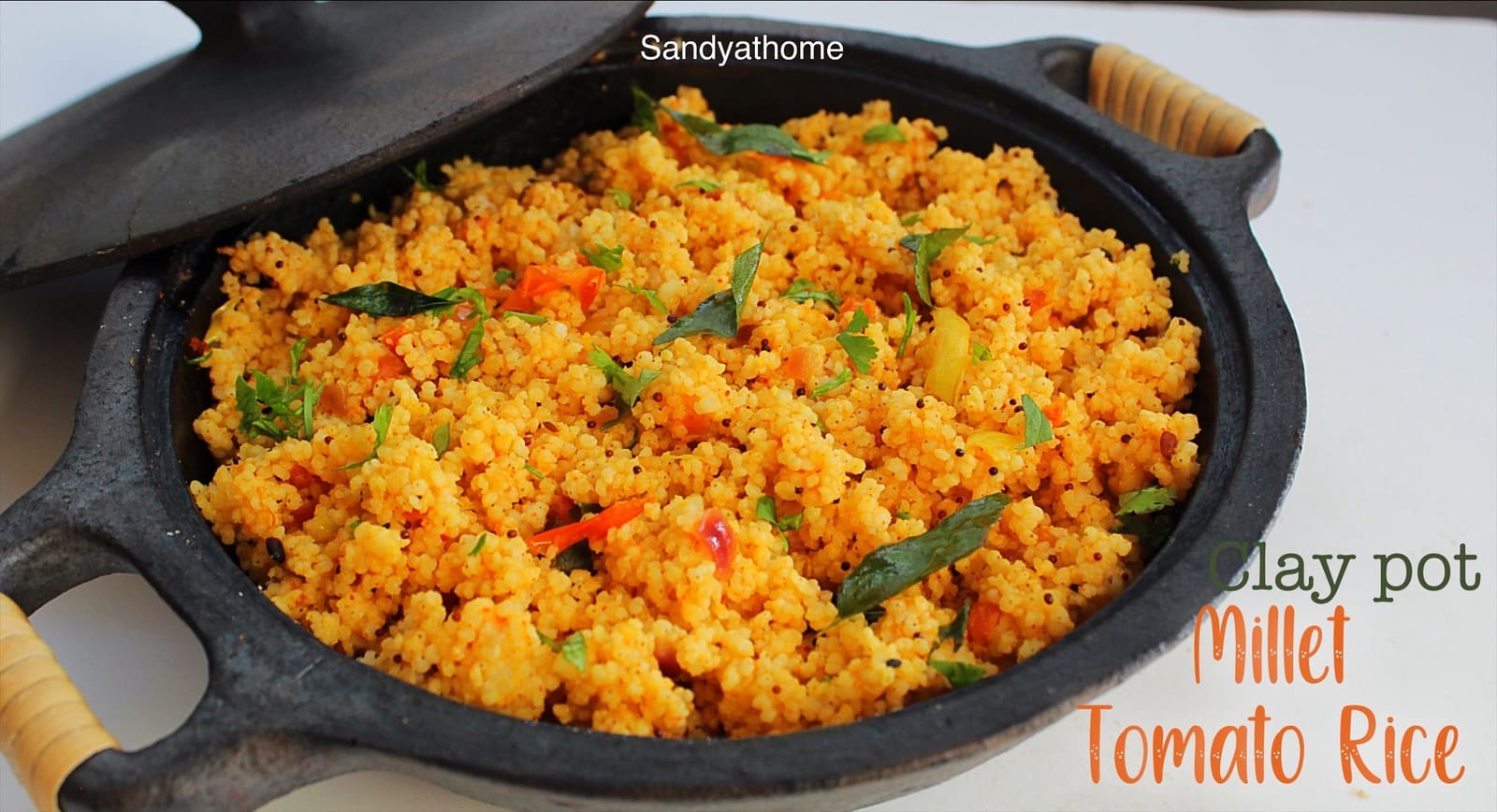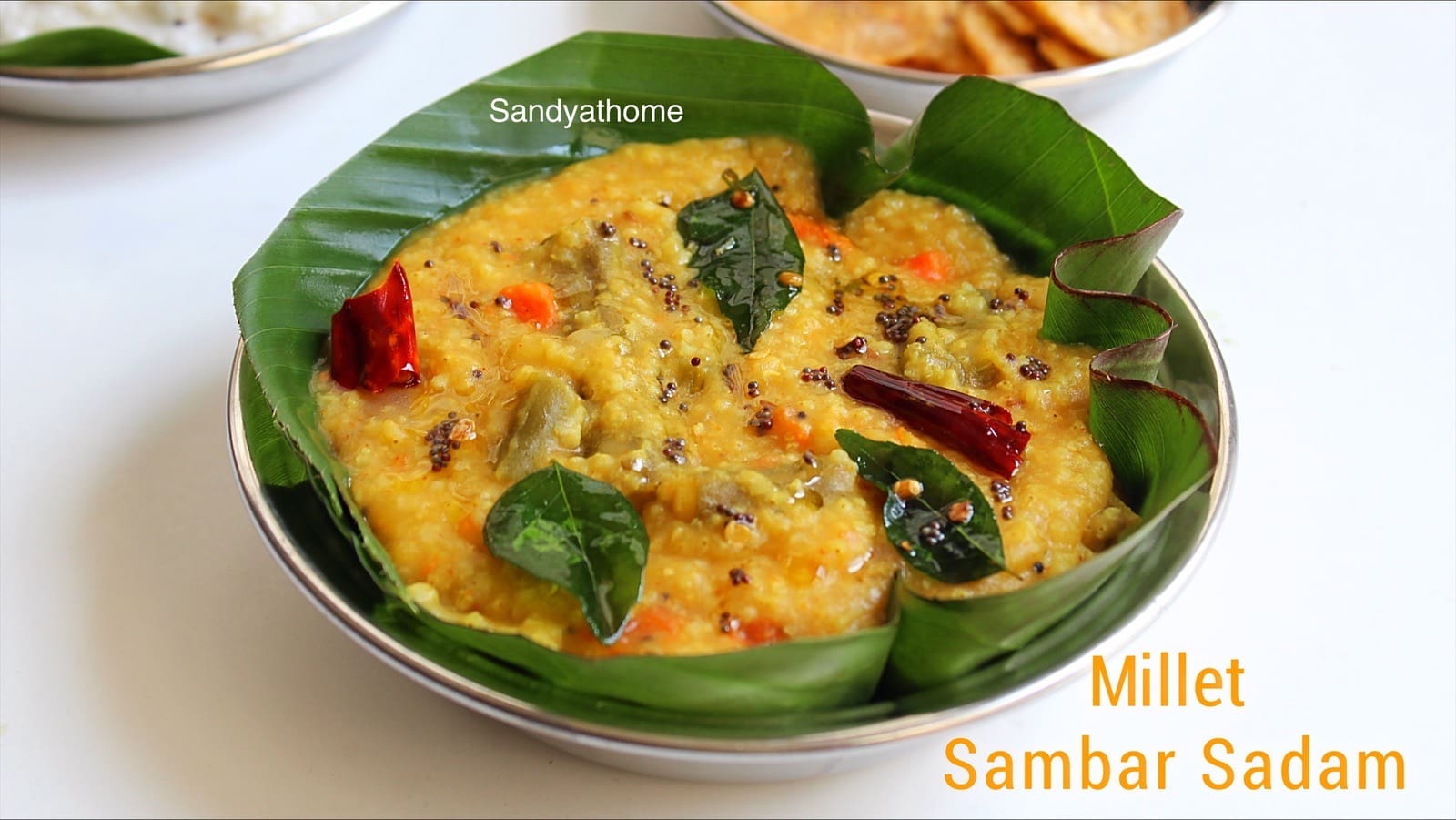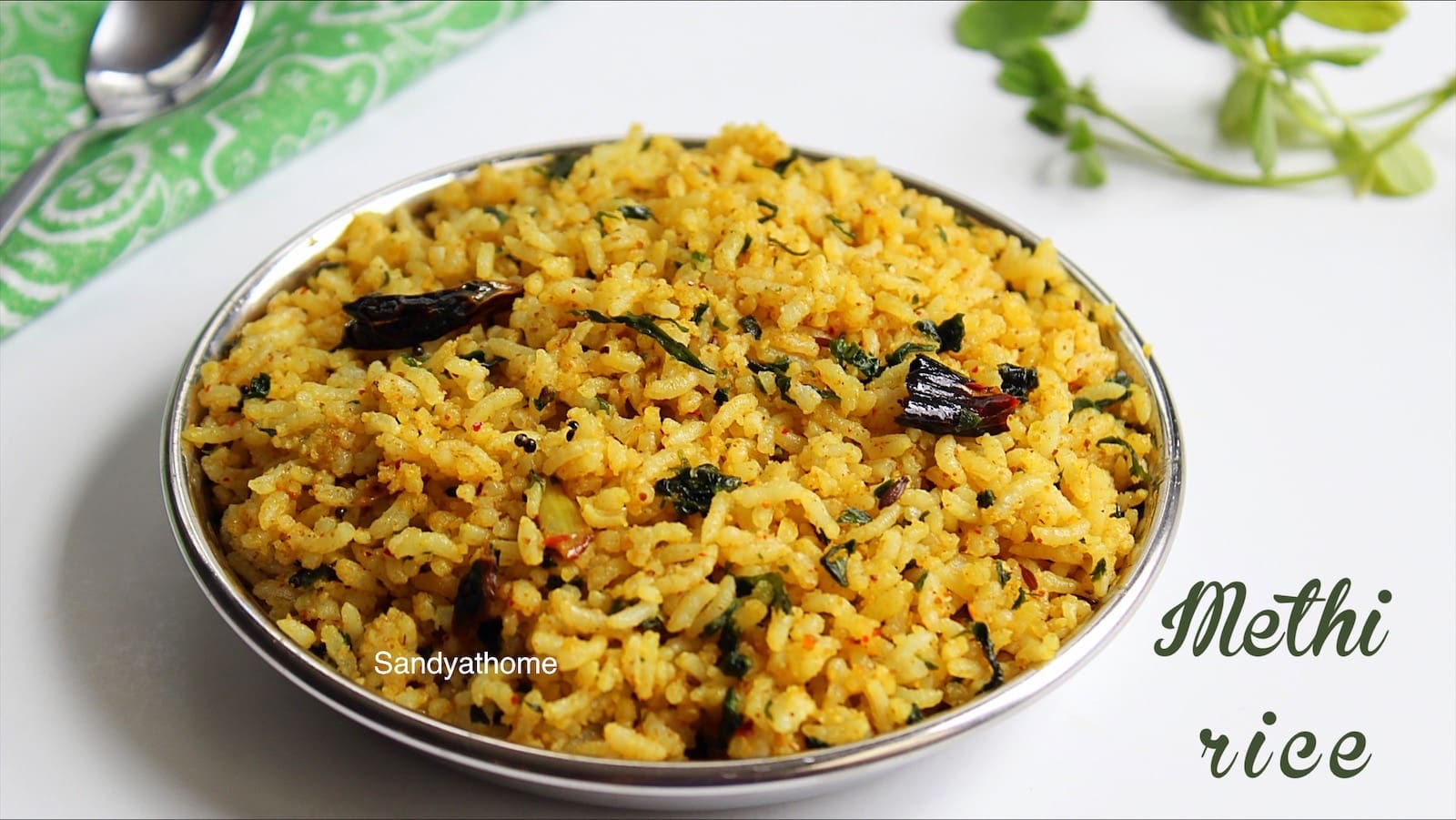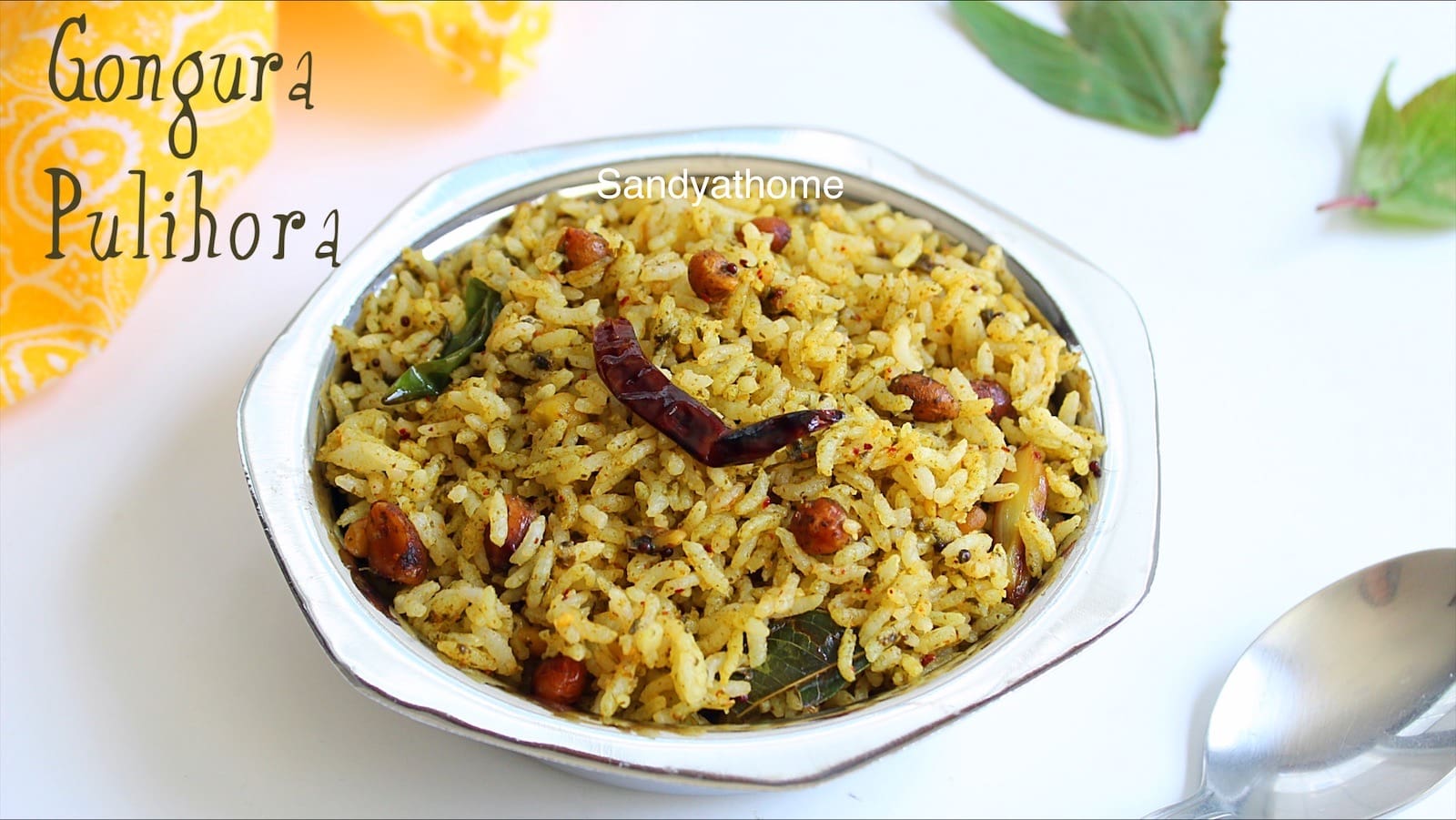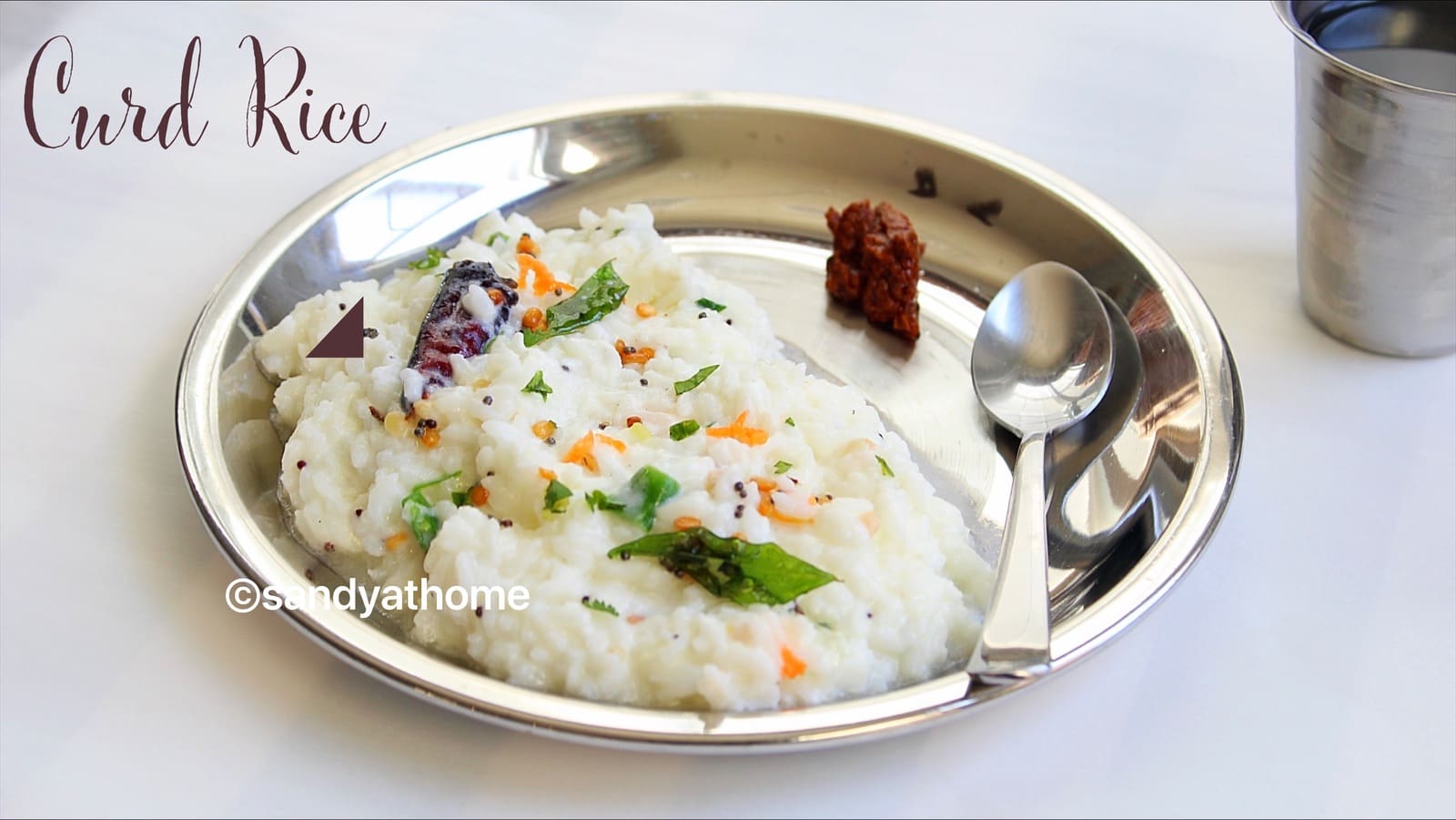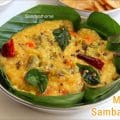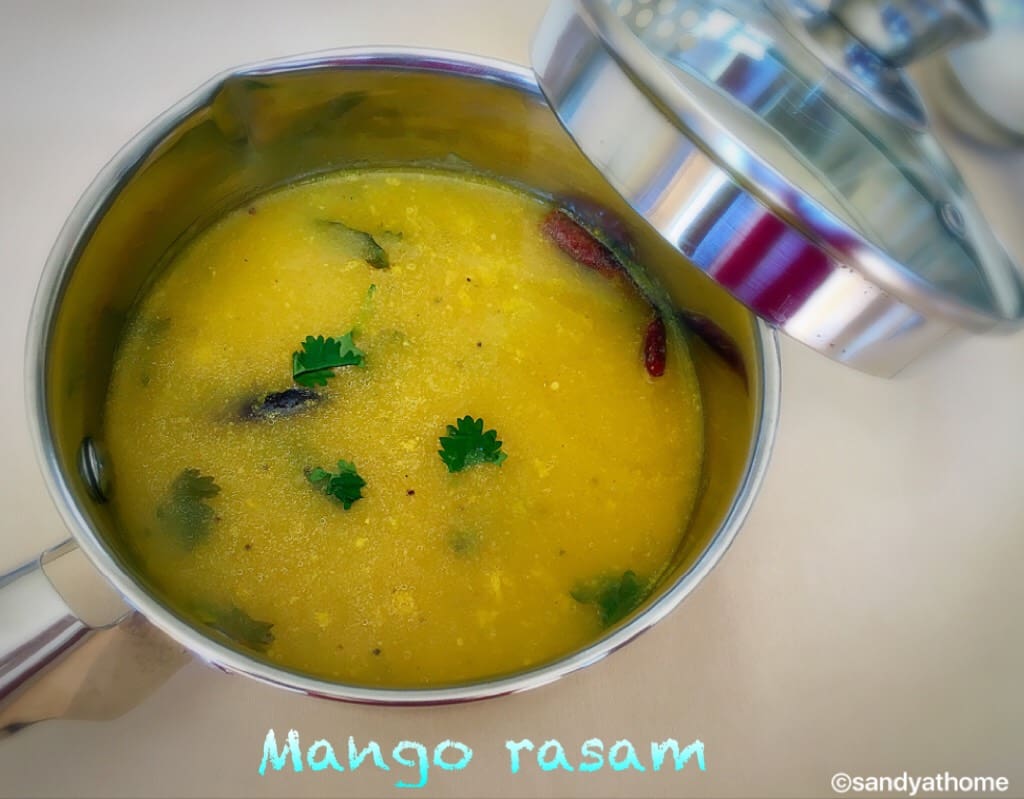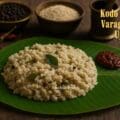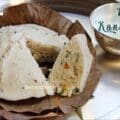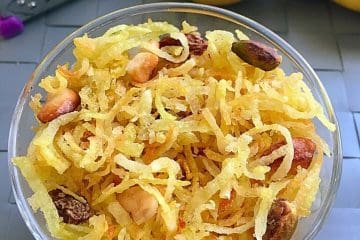Raw mango rice, known as mamidikaya annam in Telugu and manga saadham in Tamil, is a vibrant South Indian rice dish made using grated raw mango, tempered spices, and steamed rice. It’s tangy, aromatic, and naturally cooling—an instant summer favorite across many Telugu households. Quick to prepare and deeply flavorful, this humble rice dish is not only comforting but also deeply cultural.
At my grandfather’s house in the South, a grand mango tree stood tall in the backyard, its branches heavy with raw mangoes every summer. The season didn’t begin with school holidays—but with the first mango fall. My grandmother would grate it finely and make manga saadham, tempering it with mustard seeds, dals, and chilies. No fancy tools, no measuring—just her hands and heart. That bowl of rice, glowing golden with turmeric, would quietly mark the arrival of summer.
Years later, my mom continued that tradition during Ugadi, the Telugu New Year. Raw mango rice was her ritual dish—symbolizing the tartness and twists of the new year ahead. She believed it brought balance, especially when paired with other Ugadi flavors like jaggery, neem, and tamarind. It wasn’t just a festival offering—it was a message of hope in every bite.
And once the mangoes ripened, she’d serve them sliced next to curd rice, cooling and sweet—another timeless tradition to beat the heat.
This raw mango rice is more than a recipe. It is a thread between generations, a symbol of tradition and change, and a celebration of how food can carry memories, meaning, and love.
Jump to RecipeIngredient Role Breakdown – Why Each One Matters
- Raw Mango: The hero ingredient—adds tanginess, replaces the need for tamarind or lemon, and brings cooling properties to the dish.
- Cooked Rice: Acts as the comforting base; sonamasoori or ponni raw rice is ideal for the perfect South Indian texture and absorbency.
- Mustard Seeds: Add a sharp, nutty aroma and kick-start the tempering with a burst of flavor.
- Urad Dal & Chana Dal: Provide texture and a subtle earthy crunch—essential for an authentic South Indian rice dish.
- Peanuts: Add richness and nuttiness, balancing the sour mango beautifully with a creamy crunch.
- Dry Red Chili & Green Chili: Offer two types of heat—dry chili for a smoky warmth, green chili for a sharp bite.
- Curry Leaves: Deepen the flavor with their unique aroma—no South Indian tempering is complete without them.
- Hing (Asafoetida): A pinch boosts digestive qualities and gives that traditional undertone to the dish.
- Turmeric Powder: Adds color, warmth, and a natural antimicrobial touch. It’s not just for looks—it’s a traditional healer.
- Salt: Enhances all the other flavors and balances the sourness of the mango.
- Oil (Preferably Gingelly Oil): Used for tempering—adds aroma, flavor, and helps the spices bloom beautifully.
You May Also Like these Recipes:
Directions to make Mango rice with step by step images
- Prepare the raw mango
Peel one medium-sized raw mango and grate it using a fine grater. Set it aside. Choose a firm, sour mango for best flavor.
- Temper the spices, aromatics and cook raw mango
Heat oil in a kadai and temper mustard seeds, urad dal, chana dal, and peanuts until golden. Add red chilies, green chili, curry leaves, and a pinch of hing. Stir in turmeric, the grated mango, and salt. Sauté for 2–3 minutes, then turn off the heat.
- Mix, Rest and serve
Now gently fold in the cooked, cooled rice. Mix thoroughly so the tempering coats each grain.Let the rice rest for 5–10 minutes to allow the flavors to meld. Serve warm or at room temperature.
Pro Tips:
- Use sour, firm mangoes for best flavor.
- Avoid overcooking the mango—it should retain a bit of texture.
- Add a few dry coconut flakes or cashews for a richer variation.
Serving Suggestion:
Serve hot or at room temperature with curd, mor milagai (fried curd chilies), or plain papadam. Also pairs beautifully with buttermilk during summer.
Frequently Asked Questions:
Yes! Leftover, cooled rice works best—it helps avoid mushy texture and mixes beautifully with the mango tempering.
Use firm, sour raw mangoes like Kilimooku, Totapuri, or raw Bengalura for authentic taste.
Absolutely! In many Telugu and Tamil households, raw mango rice is made on Ugadi as a symbol of new beginnings and seasonal balance.
Yes. Replace with roasted cashews, or skip altogether for a nut-free version.
Raw mango is known for its cooling properties and vitamin C. Combined with rice and spices, it’s a soothing summer dish that helps beat the heat.
Other variety rice recipes
This no-tomato Muttai Masala Sadam is a soulful South Indian comfort meal where fluffy rice, eggs, and aromatic jeera–saunf masala come together in one pan. Perfect for busy days, it’s spicy, earthy, and ready in minutes — a true homestyle favorite!
Avakaya Mudha Pappu is more than just dal and pickle—it’s a nostalgic Andhra comfort food. Creamy lentils, tangy mango pickle, rice, and ghee come together in soulful chethi muddha style, carrying memories of home and heritage.
Avakaya Pickle Fried Rice is a spicy, tangy Andhra twist to classic fried rice. Made with mango pickle and veggies, this quick stir-fry is bold, comforting, and irresistibly delicious.
This Cluster Beans Masala Bhat is a comforting Maharashtrian rice dish where tender cluster beans are tossed with freshly made coconut Goda masala. The mellow, earthy spices perfectly balance the beans’ natural bitterness, creating a wholesome and aromatic lunch that’s ready in under 40 minutes.
Inspired by my mom and sister’s couscous creations, this South Indian-style curd couscous is a quick, cooling meal made with fluffy couscous, creamy curd, and gentle tempering. A perfect twist on thayir sadam for hot summer days.
A soothing Tamil-style coconut milk rice made with seeraga samba, fresh coconut milk, onions, and mild spices. This comforting summer dish, revived from Paati’s kitchen, is perfect for hot days and soulful lunches.




